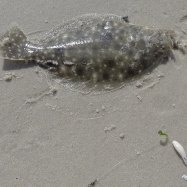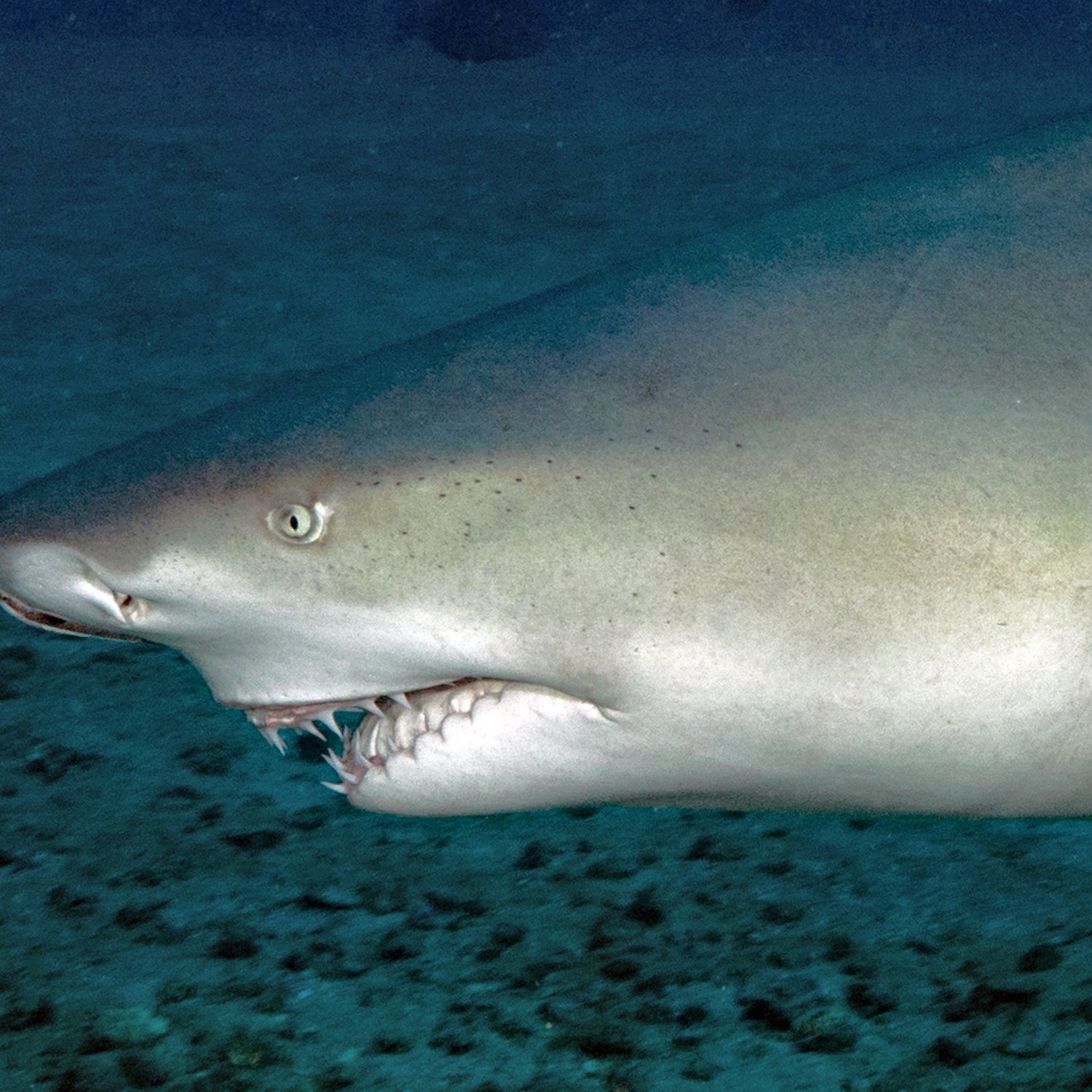
Lemon Shark
2.5 to 3.4 meters (8.2 to 11.2 feet)
The Lemon Shark is a powerful predator found in the Gulf of Mexico, Caribbean Sea, southeastern USA, northern Brazil, South Africa, and western Australia. With a slender and streamlined body, they can grow up to 2.5 to 3.4 meters (8.2 to 11.2 feet) in length and belong to the Carcharhinidae family. These impressive creatures are known for their yellow-colored skin and distinctive lemon-like scent, making them a must-see for any ocean enthusiast. #LemonShark #Carcharhinidae #OceanPredator
Animal Details Summary:
Common Name: Lemon Shark
Kingdom: Animalia
Habitat: Coastal waters, shallow reefs, lagoons
The Mighty Lemon Shark: A Coastal Predator with a Surprising Reputation
When one thinks of sharks, images of massive, fearsome creatures with sharp teeth and dark, ominous coloring often come to mind. However, there is one shark that breaks this stereotype and offers a refreshing twist - the Lemon Shark.Despite its unassuming name, the Lemon Shark (Negaprion brevirostris) is a force to be reckoned with in the coastal waters of tropical and subtropical regions of the Atlantic and Pacific oceans. Found in countries such as the United States, Brazil, Australia, South Africa, Panama, and the Bahamas, this species has a unique set of characteristics that make it stand out among its peers Lemon Shark.
Classification and Habitat
The Lemon Shark belongs to the Animalia kingdom, the Chordata phylum, and the Chondrichthyes class. Within the Chondrichthyes class, it falls under the order Carcharhiniformes and the family Carcharhinidae, which includes other well-known species such as the Great White Shark and the Tiger Shark.These creatures are primarily found in coastal waters, including shallow reefs and lagoons, making them a common sight for divers and snorkelers in these regions. They are most commonly found in the Gulf of Mexico, the Caribbean Sea, and the southeastern United States, as well as in northern Brazil, South Africa, and western Australia.
Appearance and Body Structure
The Lemon Shark's name is derived from its yellowish-brown or olive-green coloring, which gives it a lemon-like appearance. They have a slender and streamlined body shape, with a relatively short snout compared to other sharks, hence their species name "brevirostris," which means "short-nosed" in Latin.On average, these sharks measure between 2.5 to 3.4 meters (8 Lace Bug.2 to 11.2 feet) in length, making them one of the smaller species of sharks. However, despite their size, they are still formidable predators in their habitat, thanks to their sharp teeth and impressive hunting abilities.
Diet and Feeding Habits
The Lemon Shark is a carnivorous species, meaning it primarily feeds on other animals. While their diet can vary based on location and availability, these sharks are known to have a diverse and opportunistic feeding habit.Their diet mostly consists of fish, cephalopods, crustaceans, and mollusks, but they have been observed preying on other small sharks, rays, and even birds. Interestingly, they are also known to prey on terrestrial animals when they accidentally fall into the water, making them one of the few shark species with this capability.
They are mostly solitary hunters, but they have been observed hunting in groups during specific times, such as the breeding season, to increase their chances of success.
Surprising Traits and Behaviors
While popular culture often portrays sharks as aggressive and bloodthirsty creatures, the Lemon Shark has some unexpected traits and behaviors that challenge this notion.These sharks are known for their docile and non-aggressive nature towards humans. Despite their size and sharp teeth, they are not known to attack humans unprovoked and usually only display defensive behaviors when provoked or threatened.
In fact, one of the most remarkable traits of the Lemon Shark is their ability to form strong bonds with humans. In some regions where they are frequently studied and observed, these sharks have even been known to recognize and respond to individual researchers by their scuba gear colors and the sounds of their underwater cameras.
They are also one of the few shark species that exhibit complex social behaviors and have a strong maternal instinct. Females are known to form tight-knit groups during the breeding season, known as "nursery areas," where they protect and care for their young.
Conservation Status and Threats
Despite their relatively friendly nature, Lemon Sharks are not safe from threats to their population. They are currently listed as "Near Threatened" by the International Union for Conservation of Nature (IUCN) and face various challenges that impact their survival.One of the most significant threats to the Lemon Shark is overfishing, as they are commonly caught as bycatch in commercial fishing operations targeting other species. Their slow reproductive rate, with females only giving birth to one or two pups every two years, also makes them vulnerable to overfishing.
Additionally, habitat destruction and degradation, pollution, and climate change are also impacting this species. The loss of coastal habitats such as mangroves and coral reefs, which serve as essential nursery areas for Lemon Sharks, can have a severe impact on their population.
Implications for Natural Language Processing (NLP)
The Lemon Shark may seem like just another creature living in the vast and diverse ecosystem of our oceans. However, upon closer examination, it offers a unique set of characteristics and behaviors that challenge commonly held perceptions about sharks and their relationships with humans.Through this article, we have explored the Lemon Shark's features, including its classification, appearance, diet, and conservation status. By analyzing this information, we can see that these sharks possess a remarkable set of characteristics that make them stand out from other shark species.
From a Natural Language Processing (NLP) perspective, understanding these distinct features can help improve the accuracy and relevance of data and information extraction techniques. By highlighting the Lemon Shark's unique traits, we can aid in developing improved algorithms and models for data analysis in various fields, such as marine biology and conservation.
In Conclusion
The Lemon Shark may not be as famous or feared as other shark species, but it is undoubtedly a fascinating and valuable creature in its own right. From its distinct coloring and body structure to its surprising behaviors and interactions with humans, it offers a refreshing twist on the common perception of sharks.As we continue to explore and learn more about the Lemon Shark and its habitat, it is crucial to ensure its protection and conservation for future generations. By understanding and valuing this species, we can contribute to preserving the delicate balance of our oceans and the diverse life it sustains. Let us appreciate and celebrate the mighty Lemon Shark and its outstanding features that make it a truly remarkable creature.

Lemon Shark
Animal Details Lemon Shark - Scientific Name: Negaprion brevirostris
- Category: Animals L
- Scientific Name: Negaprion brevirostris
- Common Name: Lemon Shark
- Kingdom: Animalia
- Phylum: Chordata
- Class: Chondrichthyes
- Order: Carcharhiniformes
- Family: Carcharhinidae
- Habitat: Coastal waters, shallow reefs, lagoons
- Feeding Method: Carnivorous
- Geographical Distribution: Tropical and subtropical waters of the Atlantic and Pacific oceans
- Country of Origin: United States, Brazil, Australia, South Africa, Panama, Bahamas
- Location: Gulf of Mexico, Caribbean Sea, southeastern USA, northern Brazil, South Africa, western Australia
- Animal Coloration: Yellowish-brown or olive-green
- Body Shape: Slender and streamlined
- Length: 2.5 to 3.4 meters (8.2 to 11.2 feet)
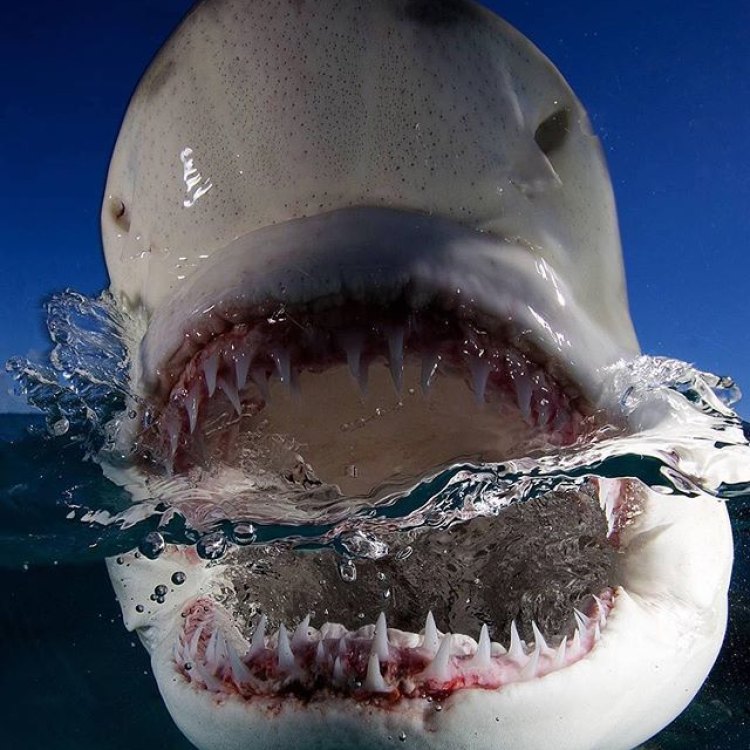
Lemon Shark
- Adult Size: Up to 3.4 meters (11.2 feet)
- Average Lifespan: 25 to 30 years
- Reproduction: Viviparous
- Reproductive Behavior: Internal fertilization
- Sound or Call: No specific sound or call
- Migration Pattern: Migratory
- Social Groups: Solitary
- Behavior: Nocturnal and crepuscular
- Threats: Overfishing, habitat destruction, pollution, climate change
- Conservation Status: Near Threatened (IUCN)
- Impact on Ecosystem: Apex predator, helps maintain the balance of marine ecosystems
- Human Use: Commercial and recreational fishing, shark tourism
- Distinctive Features: Yellowish coloration, second dorsal fin is almost as large as the first dorsal fin
- Interesting Facts: Lemon Sharks are not true man-eaters and are generally not considered dangerous to humans.
- Predator: Larger sharks, including tiger sharks and bull sharks
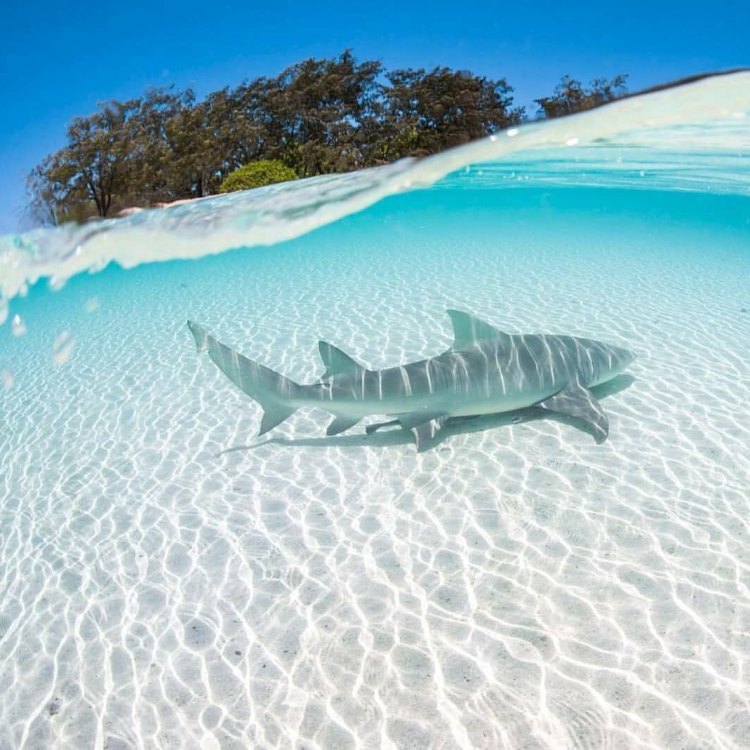
Negaprion brevirostris
The Camouflaged Predator of the Ocean: The Lemon Shark
The vast, mysterious ocean is home to an array of fascinating sea creatures. One of these is the Lemon Shark, a species that may not be as well-known as the Great White or Tiger Shark, but possesses unique qualities that make it stand out among its shark counterparts.Found in the western Atlantic Ocean, the Gulf of Mexico, and parts of the Caribbean Sea, the Lemon Shark (Negaprion brevirostris) belongs to the family Carcharhinidae, also known as the requiem sharks. This species is known for its yellowish coloration, hence the name "Lemon Shark," and its distinctive feature of having a second dorsal fin almost as large as the first PeaceOfAnimals.Com. But there is much more to this species than just its appearance.
Let's delve deeper into the world of the Lemon Shark, from its ecology and behavior to its conservation status and impact on the ecosystem.
The Size, Reproduction, and Lifespan of the Lemon Shark
The Lemon Shark is known to grow up to 3.4 meters (11.2 feet) in length, making it a relatively large shark species. These predators can weigh up to 190 kilograms (418 pounds), with females being larger than males. They have a flattened and elongated body, with a broad, blunt snout and small eyes. Their dorsal fins are also relatively small in proportion to their body size.Like most shark species, the Lemon Shark is a viviparous species, meaning they give birth to live young Lemming. This reproductive strategy is quite common among sharks, and the Lemon Shark is no exception. These sharks have a low reproductive rate, with females only giving birth every two years, and their gestation period lasting approximately one year.
Their reproductive behavior is also unique, as Lemon Sharks practice internal fertilization. Males have a modified pelvic fin known as a "clasper," which is used to transfer sperm to the female's reproductive organs. This process occurs during a mating ritual where males bite and hold onto females' pectoral fins.
The average lifespan of a Lemon Shark is 25 to 30 years, depending on their environment and the threats they face. They reach sexual maturity at around 12 years of age, making it crucial for the species' survival to protect these mature individuals.
A Solitary and Nocturnal Hunter
Lemon Sharks are primarily solitary creatures, preferring to hunt and live alone. However, they do form small groups during mating season, and sometimes can be found sharing territories with other sharks.These predators are also known to be nocturnal and crepuscular, meaning they are most active at dawn and dusk. This behavior is advantageous for their hunting as they can use the low light to their advantage, surprising their prey and increasing their chances of a successful catch.
Lemon Sharks hunt a variety of prey, including fish, crustaceans, and occasionally, seabirds. They are opportunistic hunters, meaning they will take advantage of any available food source. This helps them maintain a balanced diet and adapt to changes in their environment.
The Threats to the Lemon Shark
Despite their ability to adapt, Lemon Sharks face various threats that endanger their survival. Overfishing is one of the most significant threats to this species, as they are commercially valuable for their meat, fins, and oil. Due to this, they are often targeted in shark fishing industries, leading to a decline in their population.Habitat destruction also poses a threat to Lemon Sharks, as coastal development and pollution can disturb their natural habitat. As apex predators, they help maintain the balance of marine ecosystems, so their decline can have far-reaching consequences for the health of their environment.
Climate change is another danger to the Lemon Shark and all marine species. As the ocean temperature rises, it affects the distribution and availability of prey, making it harder for these predators to find food. Sharks are also highly sensitive to changes in ocean pH levels, which can harm their sensory systems and overall health.
The Conservation Status and Impact of the Lemon Shark
The International Union for Conservation of Nature (IUCN) has classified the Lemon Shark as Near Threatened due to the above threats. This means that the species is likely to become endangered in the near future if conservation efforts are not implemented.Due to their role as apex predators, Lemon Sharks play an essential role in the health and balance of marine ecosystems. They help regulate the population of their prey, which in turn affects the entire food chain. Without the presence of these predators, there could be a cascading effect on the ecosystem, leading to potential collapses in fish populations.
Therefore, it is vital to protect and conserve the Lemon Shark, not just for their species but for the health of the ocean and all its inhabitants.
Human Use and Interesting Facts
Apart from being targeted for commercial fishing, Lemon Sharks also have a significant impact on human activities. In some parts of the world, they are popular for shark tourism, where people can dive and observe them in their natural habitat. This sustainable form of ecotourism provides an economic incentive for communities to protect and conserve these animals.While Lemon Sharks are often portrayed as aggressive and dangerous creatures, they are not considered true man-eaters. In fact, there have been no confirmed reports of Lemon Shark attacks on humans. These sharks are relatively shy and will usually avoid human interactions.
Their predators are larger sharks, including Tiger Sharks and Bull Sharks, both known for their aggressive and opportunistic nature. The Lemon Shark's yellow coloration may also act as a form of camouflage, allowing them to blend in with their surroundings and avoid detection from these larger predators.
In Conclusion
The Lemon Shark may not be as well-known as some of its shark counterparts, but it is undoubtedly a fascinating species with unique qualities. Its distinct yellow coloration and significant second dorsal fin make it easily recognizable, but its behavior and role in the ecosystem are what truly sets it apart.As with many other shark species, the Lemon Shark faces numerous threats that endanger its survival. It is crucial for us to understand and protect these remarkable creatures to ensure their continued existence and maintain the balance of our oceans. By doing so, we not only safeguard the Lemon Shark but also all the marine life that depends on them.
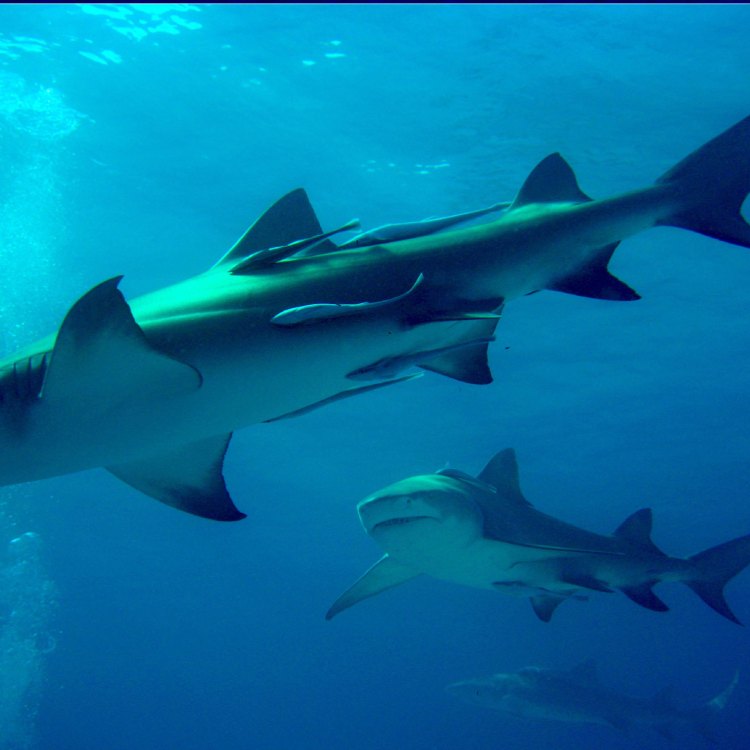
The Mighty Lemon Shark: A Coastal Predator with a Surprising Reputation
Disclaimer: The content provided is for informational purposes only. We cannot guarantee the accuracy of the information on this page 100%. All information provided here may change without prior notice.









